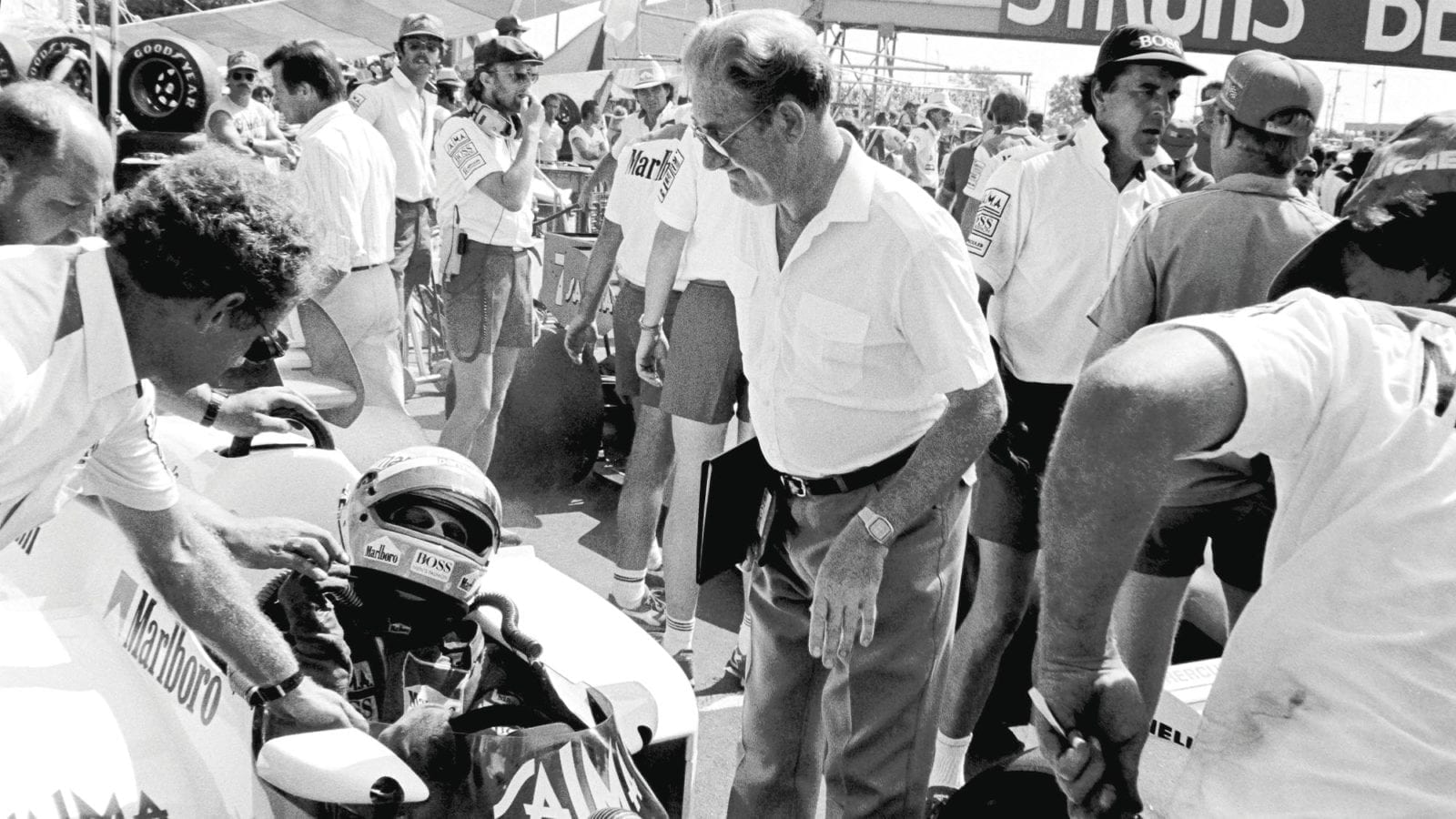Behind the scenes of the chaotic 1984 Dallas GP: Flashback
For two decades Maurice Hamilton reported from the F1 paddock with a pen, notebook and simple Canon Sure Shot camera. Here he tells the story behind his snapshot of the shambolic 1984 Dallas GP

Official starter Derek Ongaro waits to speak to a disgruntled Niki Lauda
Maurice Hamilton
This is the McLaren pit at the end of a practice session for the 1984 Dallas Grand Prix. It’s a chaotic scene, in keeping with the weekend itself, mainly because the open pits were some distance from the paddock in a cattle market.
The man in the foreground with the clipboard is Derek Ongaro, an unsung hero of the time. In the ’60s, Ongaro looked after racing operations for John Surtees and then became general manager at Lola. Through a later role as a motor-racing consultant, he worked with the RACMSA, which led to becoming a circuit inspector for FISA, the sporting arm of the FIA. In March 1980, he was appointed the first official starter for F1, by which time he was doing pioneering work on circuit safety.
I was fortunate in getting to know Derek. He was always helpful when explaining – off-the-record when necessary – the latest events in a seemingly perpetual battle with recalcitrant race organisers. His post-race detailed reports were meticulous and formed the foundation for the work carried out by Charlie Whiting in later years. Ongaro retired in 1986 and passed away 10 years later at the age of 67.
Here, he is waiting to speak to Niki Lauda, doubtless to hear his views on the state of the track. I can imagine Niki’s comments were salty and to the point. It was a shambles, which was a shame because this race had loads of potential.
As temporary tracks went, a location two miles from glittering Downtown Dallas may have been somewhat seedy by comparison, but it avoided the 90-degree stop-start sequences endemic to North American street circuits. There were third- and fourth-gear corners, many of which were blind thanks to the ever-present concrete walls.
The entire weekend was mismanaged from the start, beginning with a July date that ensured the 15 teams had to work in searing Texan heat. At 38°C, it was one of the hottest races I can remember. Mechanics were dripping with perspiration, even when standing still.
The biggest casualty was the track itself, the surface breaking up. Temporary repairs after qualifying were ripped apart and reduced to gravel by a 50-lap race for Can-Am cars. The GP scheduled for 11am the following day was in even more doubt than before.
The mood of resignation was summed up on race morning when Jacques Laffite arrived for the 7am warm-up in his pyjamas. The 30-minute session was cancelled to allow generous applications of quick-setting cement.
Against all predictions, the race started just 11 minutes late. There was drama, with just eight finishers, led by the Williams of Keke Rosberg, who cleverly wore a water-cooled skullcap. ‘Hit wall’ was the most common retirement reason.
Locals loved it and the promoters were proud of their race being run without city or state subsidies. Unfortunately, one of them took the term ‘private enterprise’ literally and absconded with the cash, ensuring the already slim chances of a second Dallas Grand Prix were, along with any profit, reduced to zero.
